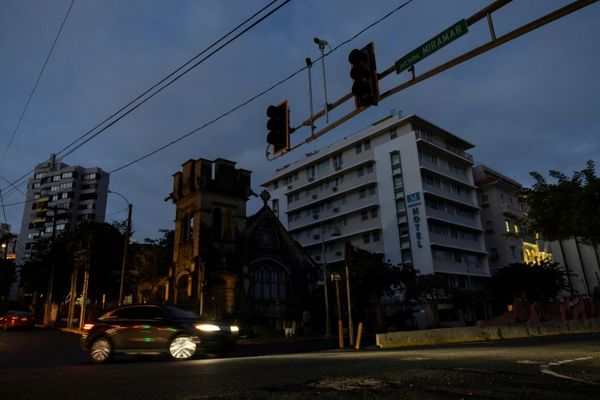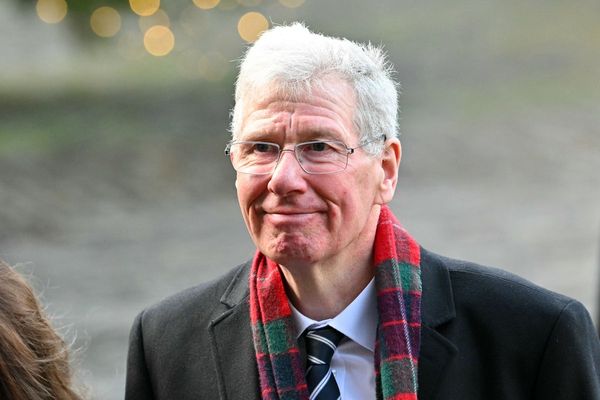
China’s Belt and Road Initiative (BRI) has been depicted as a modern-day Marshall Plan, a mega infrastructure project, or a masterplan to take over the world. But in reality, the BRI is nothing more than a branding strategy for China’s overseas investments and foreign policy—and one whose projects on the ground haven’t been particularly successful.
This didn’t stop Western observers and politicians from transforming it into a formidable boogeyman that demanded an urgent answer. As a result, over the past few years, there has been a flurry of attempts at a Western-led competitor to the BRI, from the Blue Dot Network to the Trilateral Partnership for Infrastructure Investment, without any of them achieving much success let alone as much recognition as the much-misunderstood BRI. The most recent such proposal is Build Back Better World (B3W), a U.S.-led G-7 initiative that wants to become a green, transparent, and sustainable alternative to the BRI, helping build infrastructure in the developing world.
Today, the BRI itself is on the verge of becoming only a fancy public relations slogan, thanks to all of its undelivered promises and lack of tangible achievements, and so are all the initiatives that tried to emulate and compete with it. The Asia-Africa Growth Corridor, the Blue Dot Network, the Trilateral Partnership for Infrastructure Investment, and the most recent initiative, Build Back Better World, are, for the moment, just slogans that tick all the right boxes but don’t change much on the ground. The B3W is about catalyzing “hundreds of billions of dollars of infrastructure investment for low- and middle-income countries in the coming years” by following a path guided by values, good governance, strong standards, and climate-friendly actions. This might sound good but is unlikely to either deliver much-needed infrastructure in the developing world or eclipse even the meager achievements of the BRI.
To start with, it is a signature proposal of U.S. President Joe Biden, not of the United States or the G-7, as the name is a copy-paste of his “Build Back Better” campaign slogan. What will happen when the next president comes to the White House, especially if it is a Republican one? No Democrat would have continued an initiative called “Make the World Great Again.” By tying the initiative so much to the president instead of inaugurating a truly international initiative, the Biden administration undermines its long-term prospects.
This international character of the plan is already doubtful, considering the proposal looks like a first-world framework to solve first-world problems. While calling it a “bold new global infrastructure initiative,” the White House announced it will have “four areas of focus—climate, health and health security, digital technology, and gender equity and equality.” Although worthy, these areas don’t have much to do with infrastructure, let alone the real problems faced by low-income countries. In sub-Saharan Africa, 55 percent of the people don’t have access to electricity and only 2 out of 10 people have internet access. How will, say, digitizing government work for them? How will the B3W improve health security when 75 percent of people in sub-Saharan Africa don’t have access to safely managed drinking water?
In the United States, 60 percent of U.S. electricity comes from burning fossil fuels, a third of which is coal. The situation is similar in the United Kingdom. But the B3W will propose only renewable sources for low- and middle-income countries with a tiny per capita energy consumption, where hundreds of millions of people lack access to electricity. China has been successful in promoting coal plants overseas because coal plants are genuinely needed. But while Western consumers can leave the lights, air conditioning, and TV on all day long, people in low-income countries have to be careful of their carbon footprint under the B3W because “coal power generation is incompatible with keeping 1.5°C within reach.” Therefore, the G-7 stresses “international investments in unabated coal must stop now.”
Even if it aims to really build infrastructure in the traditional sense, the B3W has the same problem the BRI did: Infrastructure in low- and middle-income countries isn’t very profitable, but the B3W aims to use private capital. When criticizing China’s so called “debt trap” projects, we must bear in mind that these projects failed to become profitable for a reason. Most large projects like a motorway or a railway that allows speeds greater than 37 miles per hour will face the same fate. Western investors know this. That’s why they aren’t already queuing to build infrastructure in low-income countries. But forget the big-ticket items—what these countries need isn’t six-lane motorways but paved streets, running water, and a functional sewage system. These aren’t exactly the business opportunities Western investors are looking for. Then what will the B3W improve?
By promoting a catchy but empty narrative, the B3W risks becoming just a public relations proposal meant only to compete with the BRI, not solve real-world problems. By focusing too much on standards, transparency, and sustainability, the initiative seems detached from the reality of low- and middle-income countries that badly need financing for often unprofitable but essential infrastructure. If the United States and its allies can address this problem, they will leave the BRI far behind. If not, it will become just another empty slogan in a growing list of Western attempts to compete with an imagined foe.







